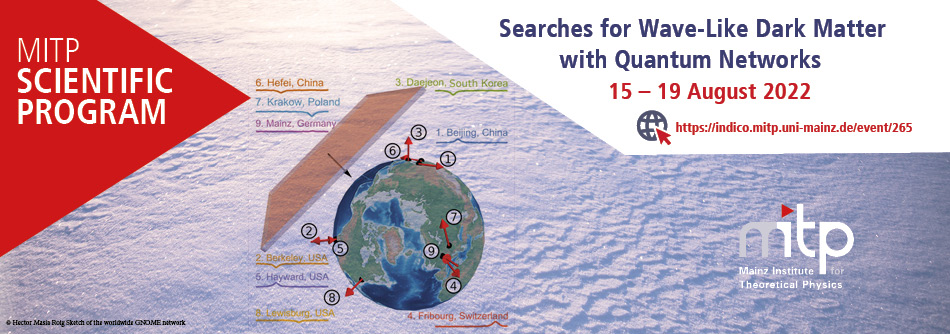Speaker
Description
The Global Network of Optical Magnetometers for Exotic physics (GNOME) is a network of geographically separated, time-synchronized atomic magnetometers and co-magnetometers in magnetically shielded environments³. This configuration allows monitoring the Zeemann levels energy splitting of an atomic ensemble continuously and simultaneously at different places of the globe.
Axion-like particles could form topological defects in the form of domain walls. The axion-like field gradient contained in the domain wall may couple with the spin of the Standard Model particles which will perturb the Zeemann levels. A time-domain analysis method was developed to look for signal patterns compatible with a domain-wall⁴. The results and methods of the analysis of the science run performed between the 29th of November and the 22nd of December 2017 will be presented⁵. Since then GNOME has gathered a large amount of data which possibilities reaching better sensitivity to domain walls. Additionally, the data quality have been improved by the implementation of check routines. Challenges and improvements posed by the new data will be discussed.
¹ This word is supported by the European Research Council under the European Union’s Horizon 2020 Research and Innovative Program under Grant agreement No. 695405 and the Cluster of Excellence PRISMA+
² Helmholtz Institut Mainz, Johannes Gutenberg-Universitaet, 55099 Mainz, Germany
³ S. Afach, D. Budker et al., Physics of the Dark Universe, 22, 162-180 (2018).
⁴ H.Masia-Roig, J. A. Smiga et al., Physics of the Dark Universe, 28, 100494 (2020).
⁵ S. Afach, Ben C. Buchler et al., Nature Physics volume 17, pages 1396–1401 (2021)

